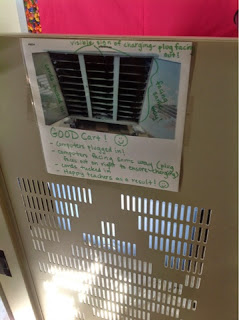Personally, for me, creativity is when boredom takes over and I don't have a good book to read -- my brain starts to create. Sometimes, creativity comes from a need to look at a problem through a different light. And, at other times, creativity stems from curiosity.
When I was doing National Board Certification, two questions continually formed in my mind: What do you notice? What do you think? As I looked at student work samples and watched recordings of my instruction, over and over and over again, I constantly asked myself what I noticed and what I thought of it. These two questions required me to develop curiosity about my teaching and student learning. By tapping into this rich skill, I was able to achieve a major goal and develop more creative lessons based on real student need.
Consider how often creativity is embedded into your classroom instruction. The most influential thinkers of the last century were both smart and creative; they learned to visualize solutions and create and mold structures based on the fundamental skills they gained in the arts and crafts.
As you consider creativity in the classroom, here are some TMS that can help us develop "creatical thinkers."
 |
| The task - design an animation....Go! |
LEAP students were given a design process to follow and some options of what to design, and then, BOOM, they created!
 |
| Consider how we are creative in our teaching. Here, students are design hashtags related to the characters in their book. |
 |
| Encourage kids to be creative! |

























































